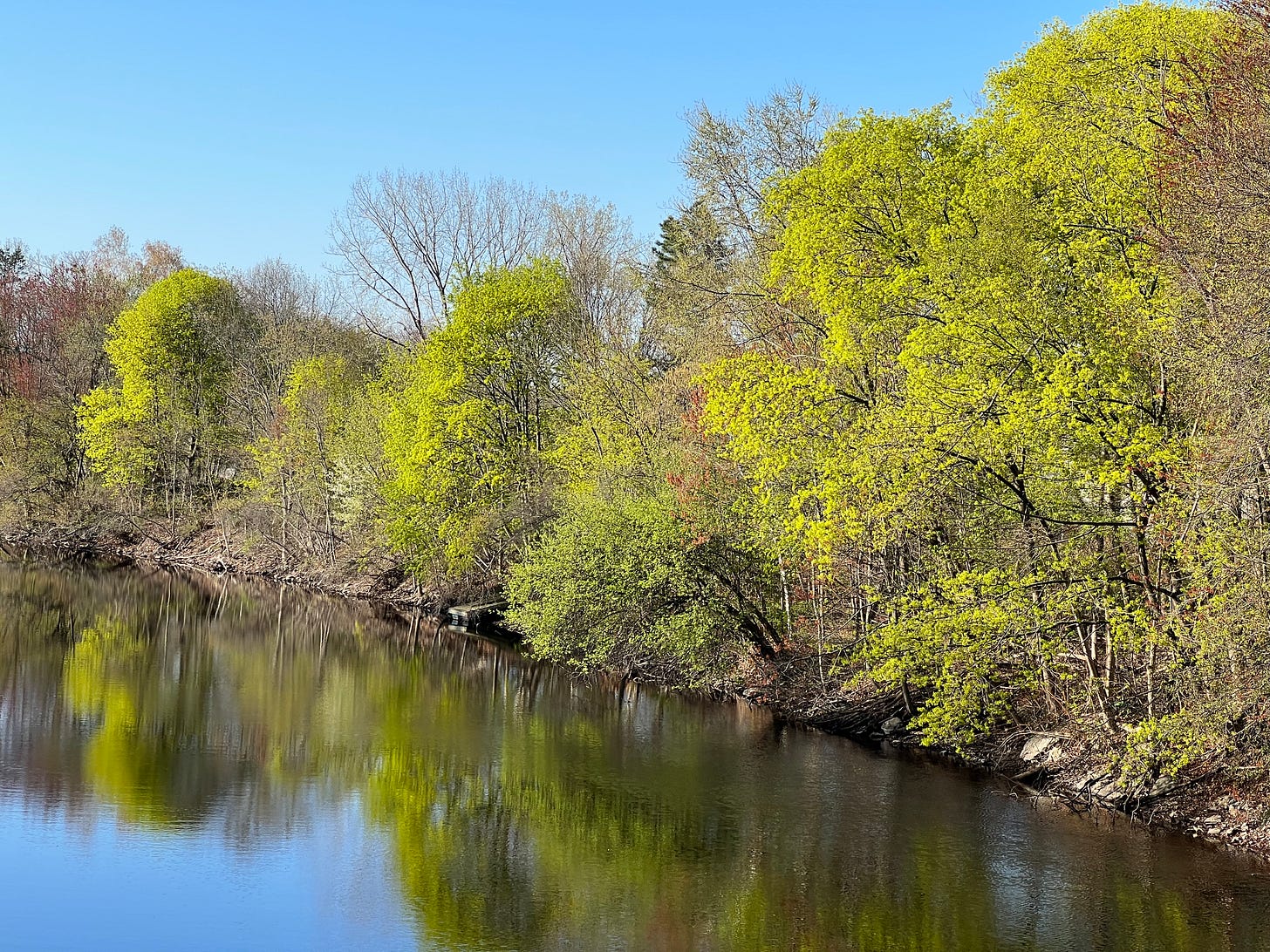As gold gives way...
Reflecting on Frost's "Nothing Gold Can Stay" and the events of this early spring
Hello, reader. I hope all is well with you. My youngest’s First Communion went off without a hitch. I fixed her hand-me-down veil in time. My daughter’s hair is so fine that the combs and pins slipped right out of her tresses so we just set the crown on her crown. And it stayed!
We have events and double bookings galore. However, on Thursday our minivan decided to cause trouble, and our mechanic can’t see us till Monday. One child was out sick two days in a row so I am behind on writing and work. The girls’ elementary school has their multicultural festival this weekend, and there are events for the Filipino school on both Saturday and Sunday. There’s a playdate and a friend’s First Communion party…
But despite the hectic schedule and unexpected events everything is wonderful because…
It is spring in New England.
And I get the overwhelming urge to recite ’s Nothing Gold Can Stay by Robert Frost (1874-1963)—out loud, outside, to anyone who will listen, which is pretty much no one but my youngest because she likes me the most, and I have not managed to embarrass her by my very existence. Yet.
Nothing Gold Can Stay (1923) is one of the many Robert Frost poems that are in the public domain.
Nature’s first green is gold, Her hardest hue to hold. Her early leaf’s a flower; But only so an hour. Then leaf subsides to leaf. So Eden sank to grief, So dawn goes down to day. Nothing gold can stay.
Dana Gioia has a great analysis which you can find here on his YouTube channel.1 You should give it a watch since it is not very long, and it is definitely worth knowing the background behind such a tightly crafted poem.
Here in Boston the early spring gold only lasts for about two weeks before a deeper green appears. We have lilac bushes lining our yard, and at the first golding of the trees the buds appear like bundles of blue-green pearls. Now their clusters have started to bloom in small pops of color. The flowers are pinkish-purple and already very fragrant.
When we moved here I didn’t know we would have these right outside our doorstep to remind me of Whitman…
When lilacs last in the dooryard bloom’d, And the great star early droop’d in the western sky in the night, I mourn’d, and yet shall mourn with ever-returning spring.
But as much as I love the smell and color of lilacs, I didn’t realize how sad it would make me to watch the purple sprays wither and die so quickly.
This is how it feels with every milestone and memory made. Like a first communion in the books. Putting away a white dress worn only once by my daughter brings on a strange and unexpected mourning.
We enjoy the sweet bouquet of lilac blossoms lingering in the air.
And then it is gone.
She won’t be seven ever again.
The veil, so carefully repaired, is now wrapped up and packed. A year of hibernation before it finds another little girl’s crown.
And someday there won’t be playdates or elementary school events. No arts shows featuring pinch pots and self-portraits in collages and crayon. No spring concerts of kids playing rough versions of Hot Cross Buns on their trumpets and Ode to Joy on their violins.
Small griefs are latent in the joys of this brief and wondrous life.
All of his videos are worth watching. They are produced by his son Mike Gioia.





I loved that Dana Gioia video you shared. Thank you!
The poem found its way into the hearts of Gen X when S E Hinton included it in her classic, The Outsiders. It is one of the few poems I can still recite from memory without error. I taught it to both my daughters - although not my son. (10-years younger).